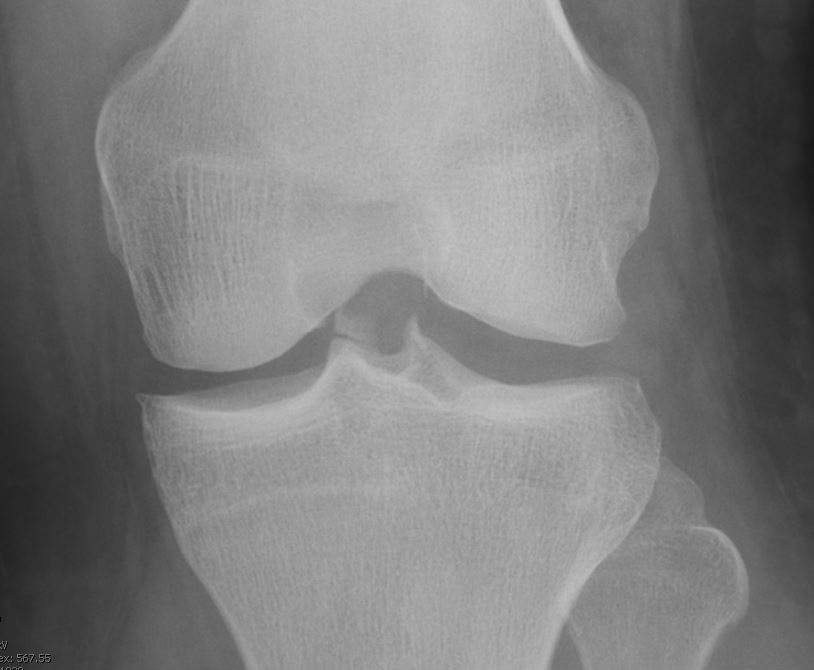Leg/Knee Case 11 ED Management
Medial Tibial Eminence (Spine) Fracture

ED management depends on the degree of fracture. The goal is reduction of the knee to near-total-extension to achieve anatomical alignment and immobilization with non-weight bearing status and crutches. Prior to reduction/manipulation, aspiration of hemarthrosis and intraarticular lidocaine may facilitate optimal extension of the knee.
For Type I and II fractures, ED reduction and immobilization with a long leg splint or knee immobilizer locked at 0 degrees flexion can often be obtained. Xray confirmation of full extension should be obtained after splinting. These are often managed non-operatively with immobilization for 4-6 weeks.
For non-reducible Type II and all Type III-V fractures, orthopedic consultation is indicated to decide whether to admit for surgical management versus outpatient surgical management.
In all discharged cases, orthopedic follow-up should be obtained within seven days for surgical planning and assessment of concurrent injuries. Studies have shown that surgery beyond seven days has led to increased fibrosis and long-term laxity issues.